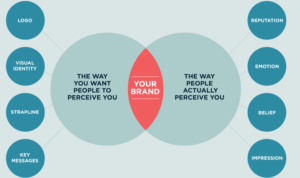Creating a Brand Style Guide kicks off with a bang, diving into the importance of visual consistency, messaging guidelines, and more. Get ready to level up your branding game!
Importance of a Brand Style Guide
In the world of business, having a brand style guide is like having the ultimate playbook for your brand’s identity. It’s not just about logos and colors; it’s about maintaining a consistent voice and visual representation that sets you apart from the competition.
Consistency is Key
One of the biggest benefits of a brand style guide is ensuring consistency across all platforms and materials. From your website to your social media posts to your packaging, having a set of guidelines in place helps maintain a cohesive look and feel that customers can easily recognize.
Establishing Brand Identity, Creating a Brand Style Guide
A brand style guide is essential for establishing and solidifying your brand identity. It helps define who you are as a company, what you stand for, and how you want to be perceived by your target audience. By outlining your brand’s personality, values, and messaging, you can create a strong and memorable brand that resonates with consumers.
Building Recognition
With a brand style guide, you can build brand recognition and loyalty among your audience. Consistent branding helps consumers remember who you are and what you offer, making it more likely that they will choose your products or services over others. By creating a cohesive brand experience, you can leave a lasting impression that keeps customers coming back for more.
Components of a Brand Style Guide
Creating a comprehensive brand style guide involves detailing various essential elements that help maintain consistency in branding. These components include logo usage, color palette, typography, visual elements, voice, tone, and messaging.
Logo Usage
- Specify clear guidelines on how the logo should be displayed, including size, placement, and clear space requirements.
- Provide examples of incorrect logo usage to demonstrate what to avoid.
- Include information on acceptable color variations or monochrome options for the logo.
Color Palette
- Define the primary and secondary color palette along with hex codes or Pantone values.
- Explain the usage of each color and restrictions on combining them.
- Include examples of color usage in different contexts like digital, print, and merchandise.
Typography
- Specify the primary fonts for headings, subheadings, and body text, including font sizes and styles.
- Detail guidelines on font pairing and hierarchy for different types of content.
- Provide examples of typography in use for consistency across various brand materials.
Visual Elements
- Document guidelines for imagery, graphics, icons, and other visual elements used in branding.
- Include rules for image quality, style, and editing techniques to maintain a cohesive visual identity.
- Offer examples of proper image usage and composition within brand materials.
Voice, Tone, and Messaging
- Define the brand’s personality through voice and tone guidelines for written content.
- Provide examples of messaging that aligns with the brand’s values and resonates with the target audience.
- Include a tone-of-voice chart or word bank to guide content creators on the brand’s communication style.
Designing Visual Elements

When it comes to designing visual elements for a brand style guide, it’s essential to start with the creation of logos, icons, and graphics that reflect the brand’s identity and values. These elements serve as the visual representation of the brand and are crucial in establishing brand recognition.
Maintaining Visual Consistency
Visual consistency across different platforms and materials is key to building a strong and cohesive brand identity. Whether it’s on social media, print materials, or websites, maintaining consistent colors, fonts, and imagery helps reinforce the brand’s message and makes it easily recognizable to consumers.
- Use the same color palette throughout all brand materials to create a unified look and feel.
- Choose fonts that are in line with the brand’s personality and ensure they are used consistently across all platforms.
- Select imagery that complements the brand’s values and resonates with the target audience.
Selecting Colors, Fonts, and Imagery
When selecting colors, fonts, and imagery for a brand style guide, it’s important to consider how these choices reflect the brand’s identity. Colors evoke emotions and can convey different messages, while fonts and imagery can help communicate the brand’s tone and style.
- Choose colors that align with the brand’s personality and evoke the desired emotions in the target audience.
- Opt for fonts that are easy to read and reflect the brand’s voice, whether it’s modern, traditional, or playful.
- Select imagery that is high-quality, relevant, and aligns with the brand’s values and messaging.
Creating Consistent Brand Messaging: Creating A Brand Style Guide
Defining brand voice and tone in a style guide is crucial for creating a consistent brand messaging strategy. It helps ensure that all communication from the brand resonates with the target audience, conveys the right emotions, and maintains a unified brand identity.
Examples of Messaging Guidelines
- Create a brand persona that represents the values and personality of the brand, such as friendly, professional, or innovative.
- Use language that aligns with the target audience’s preferences, whether it’s casual and conversational or formal and informative.
- Establish key messaging points that highlight the unique selling propositions and benefits of the brand.
Consistent Brand Messaging Strategies
- Develop a brand voice and tone guide that provides clear guidelines on language usage, including vocabulary, sentence structure, and style.
- Train all employees and stakeholders on the brand messaging guidelines to ensure consistency in internal and external communications.
- Regularly review and update the brand style guide to adapt to changing market trends and audience preferences.
Implementing the Brand Style Guide

Launching and distributing the brand style guide within an organization involves a structured approach to ensure all employees are on board with the guidelines. This process typically includes creating awareness, providing training, and ensuring accessibility to the guide.
Training Employees
To effectively train employees on how to use the style guide, it is essential to conduct interactive workshops or sessions. Hands-on training with practical examples and case studies can help employees understand the importance of consistency in branding. Utilizing online resources and creating a centralized platform for easy access to the guide can also enhance training effectiveness.
Regular Updates and Revisions
Regular updates and revisions play a crucial role in keeping the brand style guide relevant and impactful. As trends and market dynamics evolve, it is essential to review and update the guide to reflect current branding practices. Involving key stakeholders in the revision process can ensure that the guide remains aligned with the organization’s overall branding strategy.












